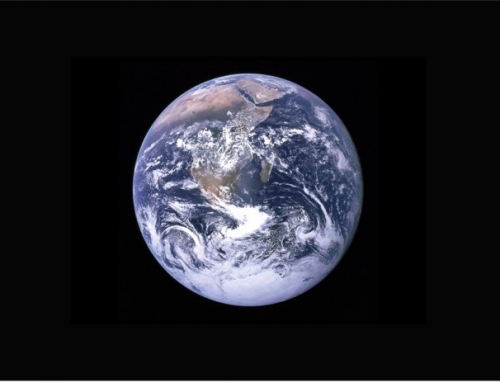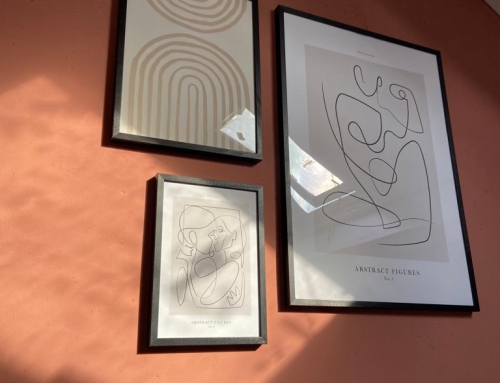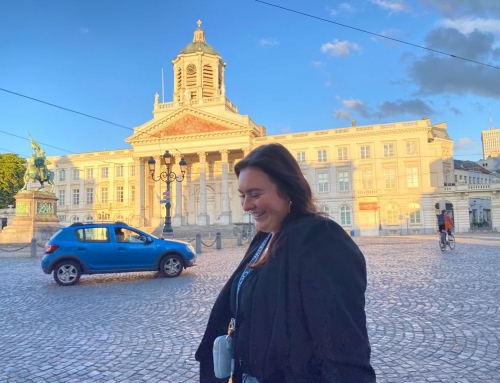Now that I know better what my role can be in the depolarization process, it is time to empower the silent middle group. By listening and looking at underlying values and thoughts, being involved, having an open attitude, focusing on the common interest, and stimulating a sustainable connection, a (local) system change is within reach.
My last blog ended with the questions how you can reach the in-group, the pushers, and how you can make them realize that commonalities, shared values , and a shared reality can be of value? I don’t have the answer to these questions, and I’m not sure if I ever going to find an answer to these questions. Does that matter? I don’t think so. I realize sometimes I want to go too fast, take too big steps and I wanted to do everything to depolarize the Emmasingelkwadrant. However, this is not possible in one year. In fact, this may never be completely possible. Because if it had been that easy, someone else would have eliminated the phenomenon of polarization long ago. That is why polarization, both in the Emmasingelkwadrant and the rest of society, can be seen as a complex problem: typically defined as a problem that includes the ability to approach from multiple, sometimes competing, perspectives and which may have multiple possible solutions (Department of Agricultural Economics, Sociology, and Education, n.d.). It is not possible to solve or to counter polarization with just one simple answer or solution. I believe that if you end up in a complex challenge like I this, you should not make the challenge any simpler than it is. As Einstein once said, “Everything should be made as simple as possible, but not simpler”. If you are going to tackle complex problems, you also have to tackle the entire complexity. Sometimes the total picture, as I have also experienced in the Emmasingelkwadrant, is so complex that it is impossible to oversee. I divided the problem into smaller parts. This makes complex challenges easier to oversee and perhaps even solvable on some fronts, but it will never be simple.
THE PROCESS
Starting small, because even small changes can make a big difference and have a big impact, was something I already mentioned in my first blog. Through the conversations I had with residents, I discovered there are many different types of people living in this area, each with their own thoughts, perspectives, and realities. There is nothing wrong with having your own reality, unless realities collide or a certain reality dominate. That is exactly what is going on in the Emmasingelkwadrant; the area is characterized by conflicting opinions, varying needs, and some dominating perspectives. In addition, the connection between the inhabitants is missing, something that could perhaps counteract these varying and conflicting perspectives. If I want to empower people, want to focus on encouraging citizen-led action for the things that are done collectively and create new space for bottom-up, it is important to look at the commonalities, the shared values, so connection can arise between people and different realities can be merged into one.
That’s what I tried to do in the Emmasingelkwadrant: I have brought residents together around the theme ‘Connection in the neighbourhood’. I facilitated a process in which the empowerment of the inhabitants, especially the silent middle group, was central. So that the focus should no longer be on TO and FOR the locals, determine what the area needs from a top-down approach, but on WITH and preferable BY the locals, acting as co-creators and main producers of their own living environment. Although the inhabitants with the dominant perspectives did not participate in this dialogue, by empowering and connecting the silent middle group they will eventually be better able to stimulate dialogue and to engage in a conversation with the dominant ‘’in-group’’, the ‘’pushers’’.
The residents who did participate in the dialogue were not the residents with the predominant perspectives, thoughts, and opinions, but the residents who jointly wanted to discover the possibilities in the Emmasingelkwadrant. They didn’t know each other beforehand, but they started talking to each other, shared valuable stories and input with each other, and continued to build on that. Through this first gathering, a neighbourhood garden has been constructed with and by the inhabitants and a neighbourhood initiative called VOGELVRIJ has taken place. The main organizer of VOGELVRIJ was a resident eager to improve the connection in the area, mainly focused on the connection between the in-group and out-group that I described in my previous blog.
BRIDGE BUILDER
A polarized environment cannot simply be depolarized. However, I am convinced that a complex challenge can be solved locally and/or partially. Ultimately, it was not about me solving the complex situation in the Emmasingelkwadrant; it was about making a change, how small this change may be. Because again: even small changes can have a big impact. However, I believe that the change in the Emmasingelkwadrant cannot even be called small. I have listened to the inhabitants, given them a voice, and acted upon their given input. And although the ‘in-group’, the ‘pushers’ were not present during the first dialogue, this dialogue was the first step towards a more connected and strengthened middle group. I brought these inhabitants together, let them discover the commonalities and shared values, so that they eventually connected with each other. As mentioned above, this has already resulted in a number of neighbourhood initiatives to which I also contributed. I’m sure more of these initiatives will follow.
I believe every community and every system has a silent middle group. This can be on a large scale, such as in neighbourhoods, but also on a smaller scale, like in schools and sports clubs. There will always be a group that is not heard or seen enough. There will always be a group that consciously or unconsciously keeps aloof. Precisely those people, who are not given enough attention and who are not listened to enough, are the people I want to give a voice and give them the feeling: you matter. I, therefore, see myself as a ‘bridge builder’. On the one hand to bring different perspectives together, so that a shared reality can be created and connections can arise, but on the other hand to bring people together who share the same vision, values, and perspectives, so they can strengthen each other. A bridge builder between different people, different perspectives, and different realities, facilitating the process towards a ‘we’ conception. By connecting people and empowering them, the opportunities for a more cooperative and human-centered society and a (local) system change are within reach.
‘’Do we stick to our own realities, our own systems, and our own beliefs? Or are we going to step outside of our bubble and reflect on ‘’the way we have always done it?’’, a quote from my first blog. I want to be the one who helps people to get out of this bubble, help them reflect on the way ‘they’ve always done it’, and explore new possibilities. Like I said in my first blog: ‘’We can start over, reflect on our own systems, and start discovering other systems. Deconstruct your own beliefs. Understand other people’s beliefs. This doesn’t mean that we have to agree, but it does mean we have to step outside of our bubble’’. I am sure that I have created a small hole in the bubble of the municipality of Eindhoven, as well as a small hole in the bubble of a number of residents in the Emmasingelkwadrant. Now it is up to them, the municipality and the inhabitants, to step out of their bubble towards a shared reality, a new system, which will have to be shaped in a cooperative way, WITH and BY the residents.
THE END (OR NOT?)
I always thought that a social innovator is someone who has an intrinsic motivation to solve major social issues such as the climate crisis or racism. For a long time I thought I was missing this motivation, and therefore never really felt a ‘real’ social innovator. Until in my last year of study, my last project, I started to realize how much my contributions, my way of thinking, and motivation were valued. I don’t have the motivation to solve major social issues. But what is important to me, is that people become more involved in social processes so that you can come up with innovative solutions for a better world. The studies I did about inequality and the solidarity economy, my internship in Kuala Lumpur, my project at the municipality, all had something to do with involving people in social processes and putting people front and center in one way or another. That’s what I want to keep doing. I see opportunities to change the existing predominant systems to a more cooperative and human-centered society. I will continue to pursue this on a small scale, because again: even small changes can make a big impact.
‘’Now this is not the end. It is not even the beginning of the end. But it is, perhaps, the end of the beginning’’ – Winston Churchill (1942)





